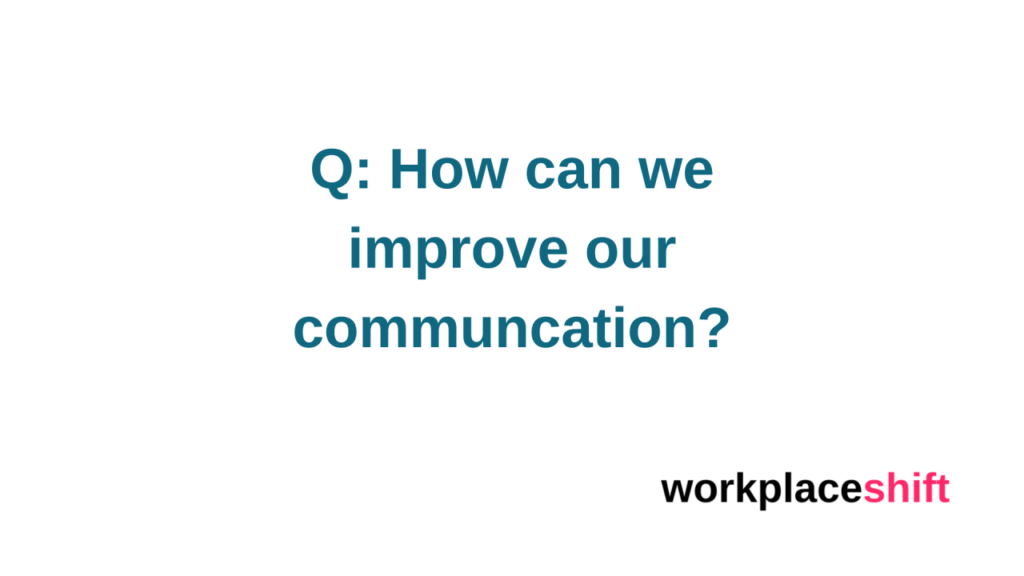Remote work is now common in many industries. Communication is key to success.
Effective digital communication strategies help remote teams stay connected and productive. In today’s fast-paced world, teams often work from different locations. This can make clear communication a challenge. But with the right tools and methods, remote teams can communicate just as well as in-person teams.
It’s about finding the right balance and tools that work best for your team. This blog will explore some of the best digital communication strategies. These strategies will help your remote team work more efficiently and stay connected.
Table of Contents
ToggleIntroduction To Digital Communication
Digital communication has become essential for remote teams. It helps in ensuring smooth workflows and maintaining strong team connections. As more companies adopt remote work, understanding effective digital communication strategies is crucial.
Importance In Remote Work
Remote work relies heavily on digital tools. Effective communication ensures that team members stay connected and productive. Without clear communication, misunderstandings can occur, leading to project delays.
Using digital communication tools can also foster a sense of community. Team members feel more engaged and valued. This boosts morale and productivity. Here are some key reasons why digital communication is important:
- Collaboration: Tools like Slack and Microsoft Teams facilitate real-time collaboration.
- Efficiency: Quick messaging helps in resolving issues faster.
- Flexibility: Team members can communicate from anywhere at any time.
Current Trends
Digital communication tools are evolving quickly. Staying updated with current trends can give remote teams an edge. Here are some trends shaping digital communication:
- Video Conferencing: Platforms like Zoom and Google Meet are popular for virtual meetings.
- Asynchronous Communication: Tools like Loom allow team members to share video updates at their convenience.
- Integrated Workspaces: Solutions like Asana and Trello combine project management with communication.
Adopting these trends can help remote teams stay connected and efficient. It is crucial to explore these options and find what works best for your team.

Credit: amazic.com
Choosing The Right Tools
Choosing the right tools is crucial for effective digital communication. Remote teams need reliable platforms to stay connected. The right tools ensure smooth collaboration and clear communication. This section will explore key tools for remote teams.
Communication Platforms
Communication platforms are essential for staying in touch. These platforms support real-time conversations. They help team members share updates quickly. Popular options include Slack, Microsoft Teams, and Zoom. Each platform has unique features to support different needs. Slack is great for quick messages and file sharing. Microsoft Teams integrates well with Office 365. Zoom is perfect for video meetings.
Choose a platform that fits your team’s workflow. Consider the ease of use and integration with other tools. Look for features like messaging, video calls, and file sharing. These features improve communication and collaboration.
Collaboration Software
Collaboration software is vital for working on projects together. These tools help manage tasks and share documents. They keep everyone on the same page. Trello, Asana, and Google Workspace are popular choices. Trello uses boards and cards to organize tasks. Asana helps track project progress and deadlines. Google Workspace offers cloud-based document editing.
Select software that matches your team’s needs. Think about ease of use and functionality. Look for features like task assignment, file sharing, and progress tracking. These tools help teams work efficiently and stay organized.
Setting Clear Expectations
Effective digital communication is vital for remote teams. Setting clear expectations is the foundation of this process. It ensures everyone knows their roles, tasks, and deadlines. This clarity helps prevent misunderstandings and keeps the team aligned. Let’s explore some key aspects.
Response Times
Timely responses are crucial in remote communication. Establishing expected response times ensures smooth workflow and prevents delays. Here are some guidelines:
- Emails: Respond within 24 hours.
- Instant Messages: Reply within 2 hours during work hours.
- Urgent Requests: Address within 1 hour.
Use status indicators on communication platforms. This shows availability and helps manage expectations. Clear response times help maintain productivity and efficiency.
Communication Etiquette
Proper communication etiquette fosters respect and clarity. Here are some best practices:
- Be concise: Keep messages short and to the point.
- Use proper language: Avoid slang and acronyms.
- Respect time zones: Schedule meetings considering different time zones.
- Acknowledge messages: Confirm receipt of important information.
Using polite language and positive tone promotes a healthy work environment. Clear etiquette rules help maintain professionalism and mutual respect.

Credit: www.heyoumedia.com
Building A Communication Plan
Building a communication plan is essential for remote teams. A well-crafted plan ensures everyone stays connected, informed, and productive. It helps avoid misunderstandings and keeps the team aligned with company goals.
Frequency Of Meetings
Setting the right frequency of meetings is crucial for remote teams. Too many meetings can lead to fatigue. Too few can result in miscommunication. Here are some tips:
- Daily Stand-ups: Quick 10-15 minute check-ins.
- Weekly Team Meetings: 30-60 minutes for project updates.
- Monthly Reviews: Discuss achievements and challenges.
Adjust the frequency based on team needs. Flexibility is key. Regular meetings keep everyone on the same page.
Agenda Setting
Having a clear agenda for each meeting saves time and keeps discussions focused. Here’s how to set an effective agenda:
- Define Objectives: What do you want to achieve?
- List Topics: Include all points to be discussed.
- Assign Roles: Who will lead each topic?
- Allocate Time: Set time limits for each discussion.
Sharing the agenda before the meeting is helpful. It allows team members to prepare. This leads to more productive meetings.
Incorporate these strategies to build an effective communication plan. It enhances collaboration and ensures your remote team thrives.
Enhancing Team Collaboration
In remote work, effective digital communication is crucial. It ensures team collaboration. When teams work well together, they achieve more. Let’s explore how to enhance team collaboration.
Virtual Team Building
Remote teams need strong bonds to work effectively. Virtual team-building activities help build these bonds. Here are some ideas:
- Online Games: Games like trivia or escape rooms promote teamwork.
- Virtual Coffee Breaks: Casual chats build relationships.
- Workshops and Webinars: Learning together fosters unity.
Virtual team-building activities should be fun. They should also be regular. Consistent activities keep the team connected.
Shared Goals
Clear, shared goals align remote teams. They ensure everyone works towards the same objectives. Here’s how to set shared goals:
- Define Goals Clearly: Be specific about what needs to be achieved.
- Set Measurable Targets: Use metrics to track progress.
- Ensure Understanding: Make sure everyone knows their role.
Shared goals provide direction. They motivate team members. They also help in measuring success.
Using a table to track goals can be effective:
| Goal | Responsibility | Deadline |
|---|---|---|
| Launch new feature | Development Team | End of Q2 |
| Increase social media engagement | Marketing Team | Ongoing |
Tables help in visualizing goals. They make tracking easier.
Overcoming Communication Barriers
Overcoming communication barriers is crucial for the success of remote teams. Effective communication ensures smooth collaboration, despite physical distances. Teams face challenges such as time zone differences and cultural sensitivity. Addressing these barriers helps build a cohesive and productive team.
Time Zone Differences
Managing time zones can be tricky for remote teams. Scheduling meetings becomes a challenge. Use tools to find overlapping hours. Tools like World Time Buddy can help. Set clear guidelines for response times. This ensures no one feels left out. Rotate meeting times to accommodate different zones. It shows respect for everyone’s schedule.
Cultural Sensitivity
Cultural differences can lead to misunderstandings. It’s important to be aware of these differences. Encourage team members to share their cultural practices. This fosters an inclusive environment. Use simple, clear language to avoid confusion. Avoid idioms and slang that may not translate well. Respect different communication styles. Some cultures prefer direct communication. Others may use more indirect methods. Understanding these nuances helps in building trust and respect.
Measuring Communication Effectiveness
Measuring communication effectiveness is vital for remote teams. It ensures that messages are clear and objectives are met. Using specific strategies, teams can gauge their communication success. This helps in identifying areas needing improvement. Let’s explore some essential ways to measure communication effectiveness.
Feedback Mechanisms
Feedback is crucial for understanding communication impact. Regular feedback sessions can reveal how well messages are received. Using surveys and polls, team members can share their thoughts. Anonymous feedback can encourage honest opinions. This helps in identifying gaps in communication.
Performance Metrics
Performance metrics provide concrete data on communication success. Tracking response times can show how quickly team members react. Measuring task completion rates helps in understanding if instructions are clear. Analyzing meeting outcomes can reveal if goals are being met. These metrics offer valuable insights.
Adapting To Change
Remote work is here to stay. Teams must adapt to new ways of communication. Adapting to change is essential for success. Digital communication helps bridge the gap. Teams must stay connected and productive. Strategies must evolve to meet new challenges.
Scalability Of Tools
Choosing the right tools is crucial. Tools must scale with your team. Growth should not hinder communication. Tools like Slack and Zoom are popular choices. They offer flexibility and scalability. Evaluate your team’s needs before selecting tools. Ensure they can handle an increase in team size.
Continuous Improvement
Always look for ways to improve. Regularly assess your communication strategies. Gather feedback from your team. Identify areas that need improvement. Implement changes based on feedback. Continuously refine your approach. This keeps your team engaged and productive.
Case Studies And Examples
Effective digital communication is crucial for remote teams. Learning from real-life examples helps understand what works best. Case studies provide practical insights. They show how successful remote teams navigate challenges. This section highlights some of these examples.
Successful Remote Teams
Buffer is a social media management company. The team operates fully remotely. They use Slack for instant messaging. Zoom is their go-to for video calls. They hold regular check-ins. This keeps everyone aligned. They also use Trello for project management. Clear task assignments ensure no one feels lost.
GitLab is another example. They have a global remote team. They rely heavily on GitLab itself for collaboration. They document everything. This ensures transparency. They use video calls sparingly. Most communication happens asynchronously. This respects different time zones.
Lessons Learned
From Buffer, the lesson is clear. Frequent check-ins build team cohesion. Regular updates keep everyone on the same page. Tools like Slack and Trello simplify communication. They help in tracking progress.
GitLab teaches another lesson. Documentation is key. It ensures everyone has access to the same information. This reduces misunderstandings. Asynchronous communication respects different schedules. It reduces burnout. Using fewer tools but using them well is effective.
These case studies highlight practical strategies. They show how different teams succeed. Learning from them can improve your remote team’s communication.

Credit: www.almondsolutions.com
Conclusion And Future Outlook
Effective digital communication strategies are vital for remote teams. They ensure smooth operations and enhance productivity. As we look to the future, several trends and long-term benefits come into play. Understanding these can help teams stay ahead and maintain effective communication.
Emerging Trends
The rise of AI-powered tools is changing digital communication. These tools help in automating routine tasks. They also offer insights into communication patterns. Virtual Reality (VR) is another trend gaining traction. VR can create immersive meeting experiences. It helps in making remote interactions more engaging.
Cloud-based platforms continue to evolve. They offer real-time collaboration features. This makes sharing and editing documents easier. Voice-activated assistants are also becoming common. They help in scheduling meetings and setting reminders. These trends are shaping the future of remote communication.
Long-term Benefits
Effective digital communication can improve team collaboration. It reduces misunderstandings and delays. Teams can respond quickly to issues. This leads to better problem-solving. Clear communication builds trust among team members. It fosters a positive work environment.
Remote teams can also save costs. There is no need for physical office space. This reduces overhead expenses. Digital tools help in tracking performance. Managers can monitor progress and offer timely feedback. This ensures continuous improvement.
Adapting to new communication strategies prepares teams for future challenges. It keeps them competitive in a global market. Investing in these strategies today will pay off in the long run.
Frequently Asked Questions
What Are Essential Tools For Remote Team Communication?
Essential tools for remote team communication include video conferencing apps, instant messaging platforms, and project management software. These tools help maintain seamless collaboration and ensure everyone stays connected and informed.
How Can Remote Teams Improve Communication?
Remote teams can improve communication by setting clear guidelines, scheduling regular meetings, and using collaborative tools. Encourage open dialogue and provide feedback to enhance understanding and productivity.
What Are The Benefits Of Digital Communication For Remote Teams?
Digital communication offers flexibility, real-time collaboration, and efficient information sharing. It helps remote teams stay connected, aligned, and productive, regardless of their location.
How To Handle Communication Challenges In Remote Teams?
To handle communication challenges, establish clear expectations, use reliable technology, and encourage regular check-ins. Address issues promptly and foster an open, supportive environment.
Conclusion
Effective digital communication boosts remote team productivity. Use clear tools and methods. Ensure every member feels included. Regular check-ins foster collaboration and trust. Encourage open feedback for continuous improvement. Keep communication channels consistent and accessible. Prioritize clarity to avoid misunderstandings.
Adapt strategies as your team evolves. A well-connected team achieves more. Remember, strong communication is the key to remote success.
Related posts:
No related posts.





